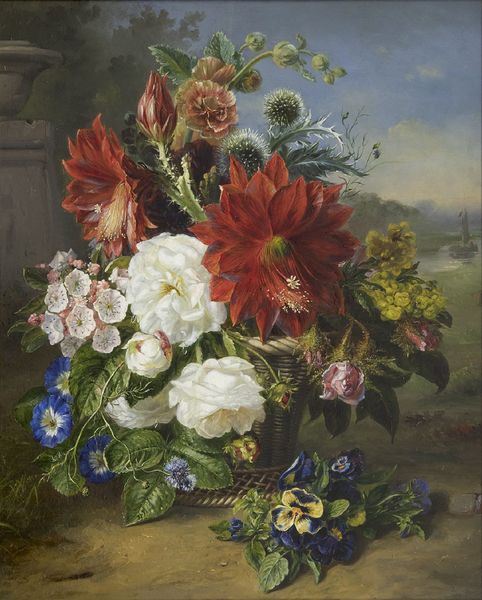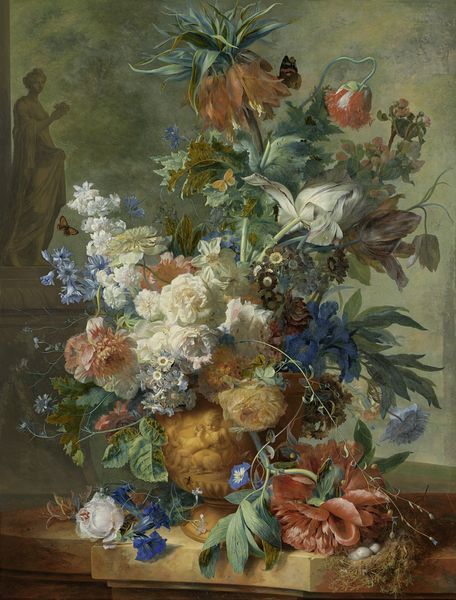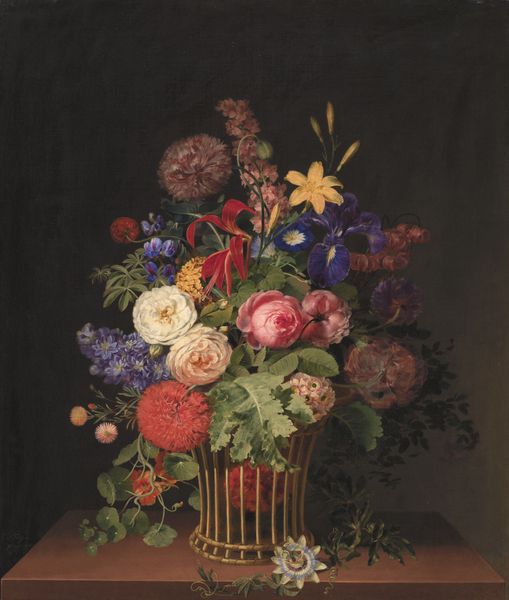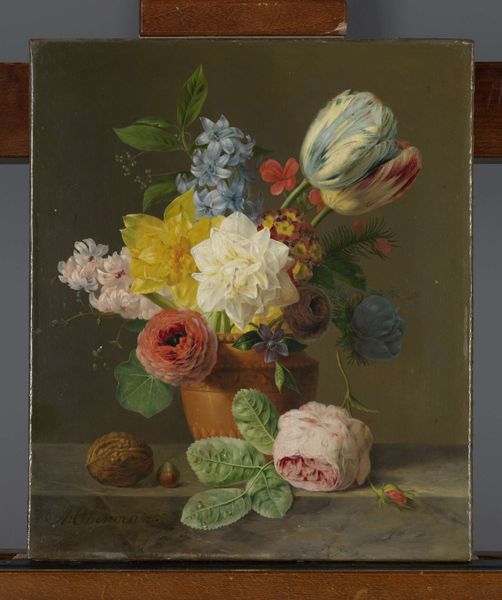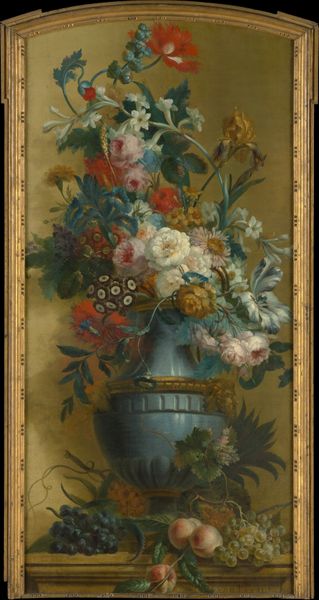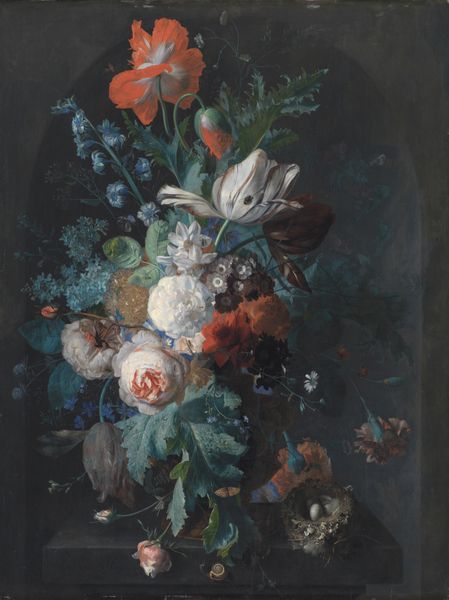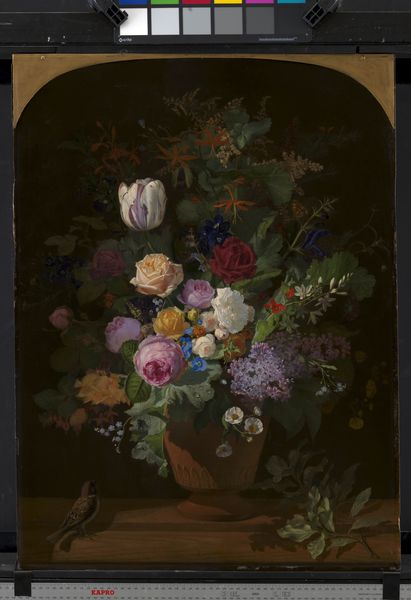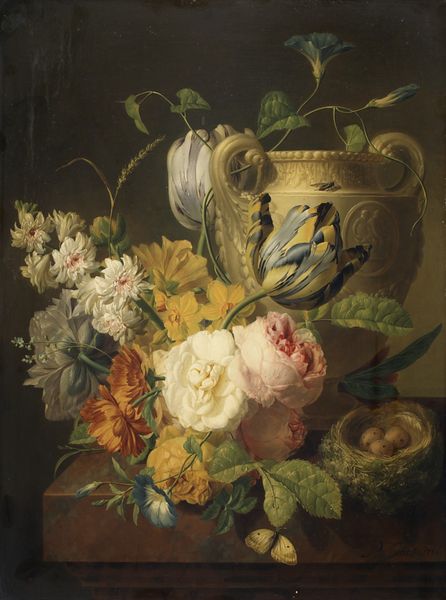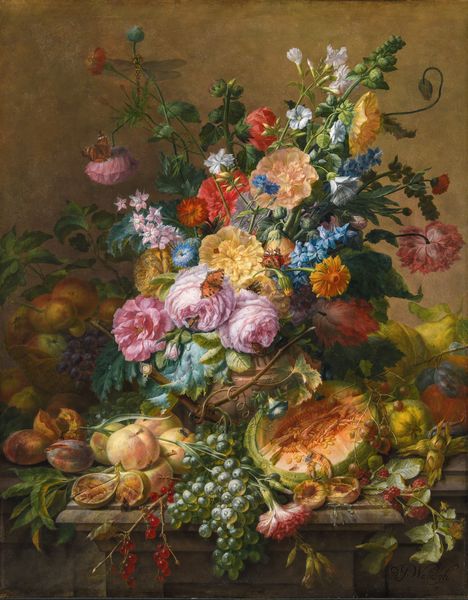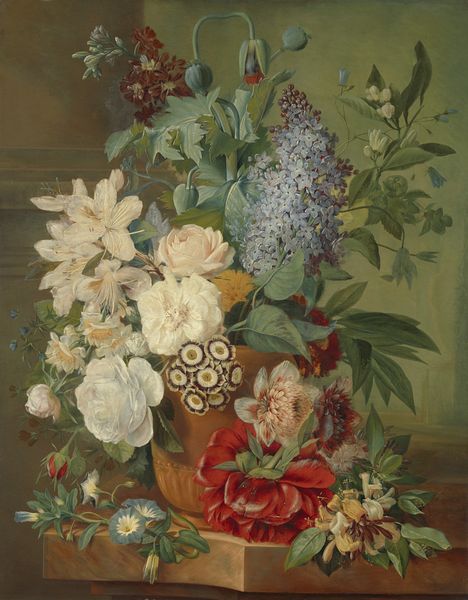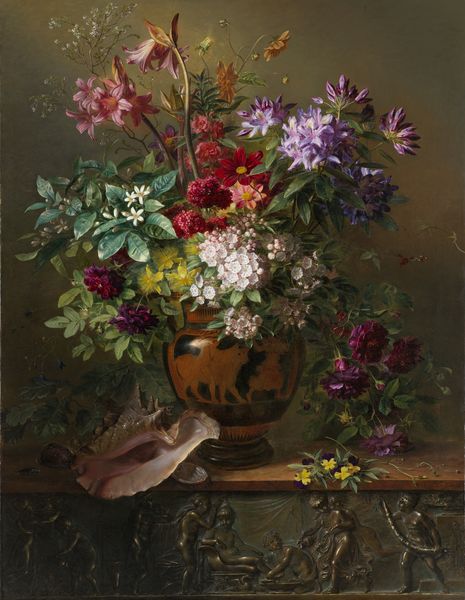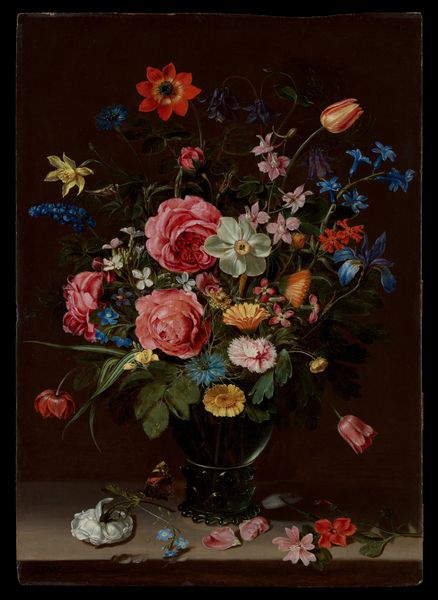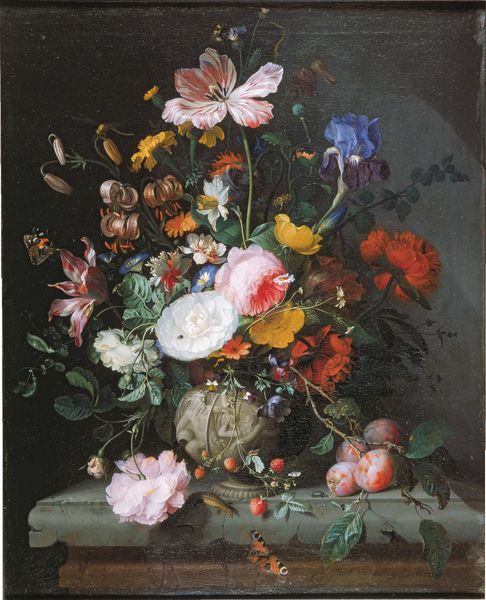
Vase i græsk stil med blomster, stående på en træstub 1832
0:00
0:00
painting, oil-paint, canvas
#
painting
#
oil-paint
#
landscape
#
oil painting
#
canvas
#
romanticism
#
academic-art
#
watercolor
Dimensions: 100.5 cm (height) x 82.5 cm (width) (Netto), 110.8 cm (height) x 92 cm (width) x 4.3 cm (depth) (Brutto)
Curator: Good morning, and welcome. We are looking at Hermania Neergaard's "Vase in Greek Style with Flowers, Standing on a Tree Stump," completed in 1832. Neergaard used oil paint on canvas for this still life, now at the Statens Museum for Kunst. Editor: What strikes me immediately is the almost dreamlike quality, the way the vase overflows. It's both abundant and somehow melancholy. Is it the muted background perhaps that creates that atmosphere? Curator: Indeed. It's interesting to consider how the social conventions of the time period impacted her work as a female artist working in the romantic tradition. Still lifes were considered acceptable subject matter for women in that era; allowed them entry to a certain class status. It becomes crucial to see these paintings as expressions shaped by societal expectations and artistic constraints of gender and class, don’t you agree? Editor: Absolutely. The academic style really emphasizes that restraint you mentioned. I see echoes of class division, perhaps the presentation of the natural world that catered to certain elites in Denmark? I wonder, for example, was Neergaard attempting a political statement, or was this painting meant solely as decor? Curator: While it's hard to know intent without a proper record, what’s fascinating is the tension she creates. The very choice of the Greek vase suggests an aspiration towards classical ideals, maybe about Neoclassical forms and societal values? She places it incongruously upon a rough tree stump which connects it directly with the natural environment. Editor: I’m especially drawn to the symbolism of the flowers. I'm sure that there’s meaning imbued within each variety. Was the use of wildflowers symbolic of something subversive within traditional floral arrangements? Curator: We cannot overlook that there’s interplay going on here of what it means to produce within those societal boundaries that also reflects, in turn, a growing artistic movement interested in more progressive renderings of still life! The scale, the colors, and the romantic backdrop she’s imagined does indeed play into this tension. Editor: What resonates most profoundly, for me, is the contrast between wild and ordered; nature shaped to mimic grandeur. It’s that dialogue I'll continue to think about. Curator: And, for me, this exercise invites us to reconsider what "acceptability" and conformity look like on the historical canvas and consider that gendered roles are indeed subject to continuous re-negotiations. Thank you for your insights.
Comments
No comments
Be the first to comment and join the conversation on the ultimate creative platform.
